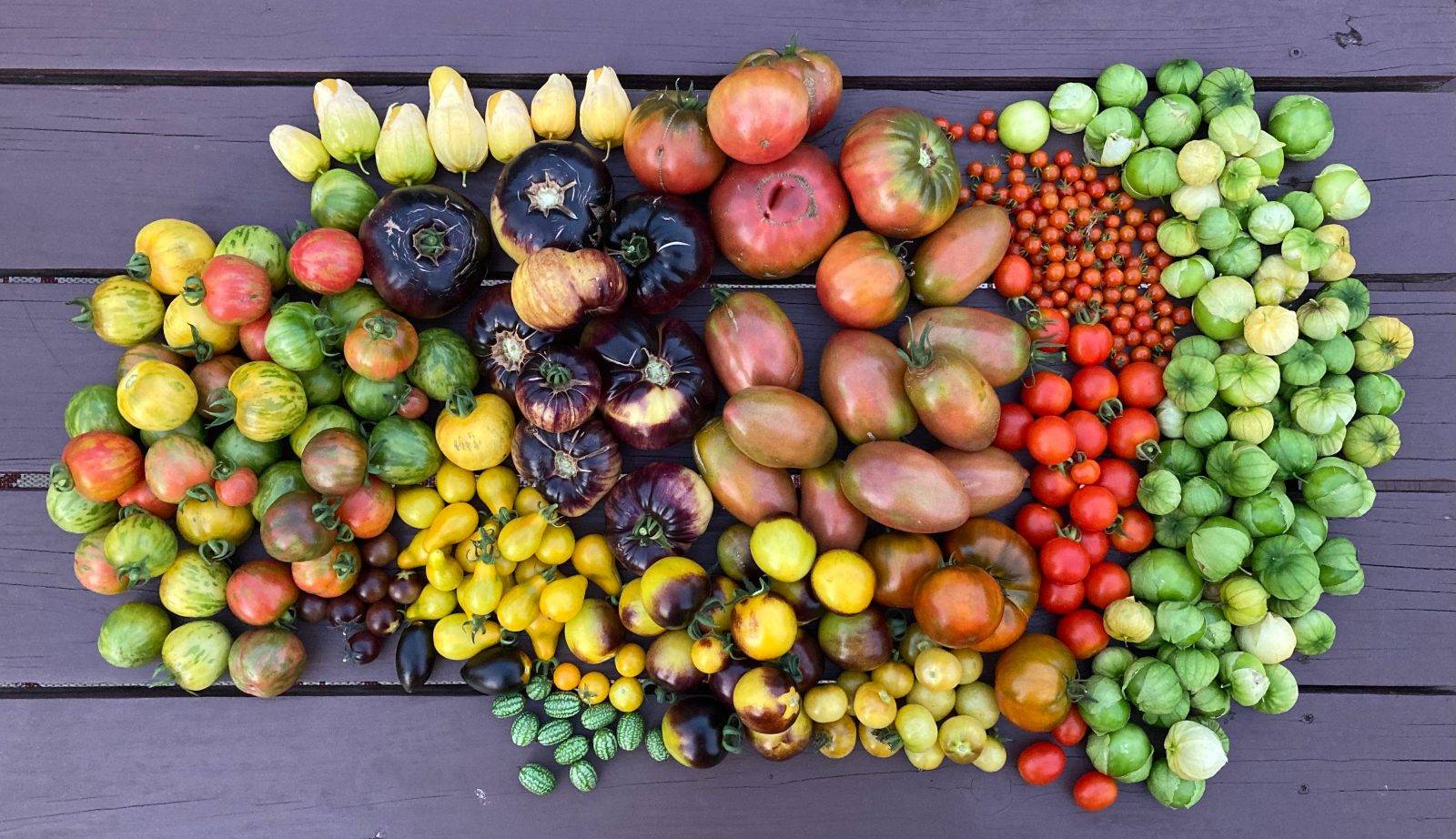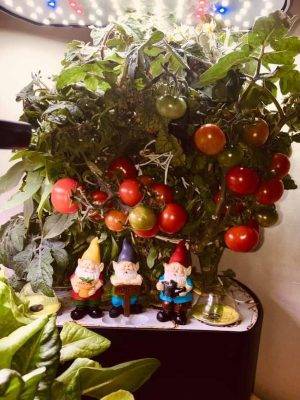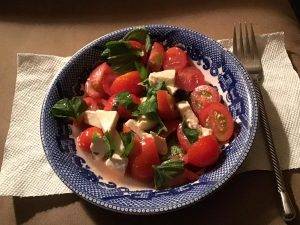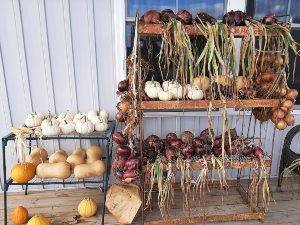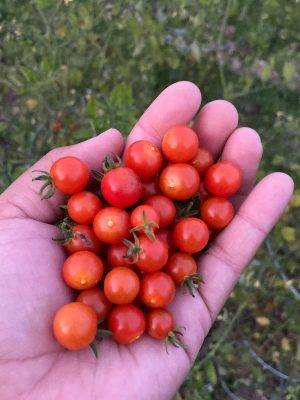Robin Bridson
Robin started her first hydroponic garden in mid-August of 2020 as a way to cope with working from home during the pandemic. She started with lettuce, basil, and cherry tomatoes. Then added gnomes to "watch over" the gardens when she went back to the office. Now she has four hydroponic gardens and grows lavender, rosemary, and flowers. Fun fact — her cherry tomatoes produced fruit all year long. It must have been the gnomes.
Caprese Salad ala Robin: Cherry tomatoes, basil, fresh mozzarella, red wine vinegar, and olive oil. Not pictured (but really yummy) are homemade croutons made from Flour & Salt Rosemary and Salt bagels (cubed, a little olive oil, toss and bake!).
Michelle Butzgy
Michelle grew up on a dairy farm and has been gardening her whole life. In early 2020 she moved and created a new garden from scratch. Her vegetable garden has 16 raised beds made out of logs from fallen trees and two others from plain wooden boards. She also has larger areas that are directly on the ground. In total her main vegetable garden is about 50' x 60' (including the raised bed area). She also has a dedicated herb garden and some areas for perennials like strawberries and asparagus and an area just for watermelons and squash. She has fruit and nut bushes, grape vines, and a mini fruit tree orchard. “I love watching the birds, butterflies and bees while in the garden and planting things that are beneficial to not only our family, but to the other creatures that live around us as well,” says Michelle. In total she grew about 56 different varieties of vegetables this year.
In addition to feeding her family fresh produce, she freezes, dehydrate, cans, and cures produce for winter storage depending on the type of vegetable. She also gives some away to friends and co-workers. This year her favorite product from the garden was salsa verde, featuring fresh tomatillos, onions, and garlic.
Nicole Carvell
Nicole and her husband wanted to start a garden to grow tomatoes, peppers, and corn — produce they missed eating from Nicole’s hometown in Arizona. They started in 2018 and chose veggies that were more on the unusual side in terms of colors. This year they had 14 varieties of tomatoes, eight varieties of peppers, three varieties of tomatillos, eight varieties of corn, two types of squash, five types of carrots, two types of onions, two types of sunflowers, 12 ground cherry plants, beets, radishes, Swiss chard, bok choy, lettuce, and cucamelons. Nicole created a Google sheet to keep track of where everything was planted. “I find it relaxing to spend time in the garden, just being near the plants and working with them,” she says. “They sort of become my plant babies and I want to do a good job of growing them.”
They built 10 raised beds and planted corn, squash, sunflowers, one variety of peppers, and five types of tomatoes planted directly into the ground. They started growing seedlings inside in late February. The plants produced very well and they had more than they could eat. Nicole shared with coworkers and sold some at the Syracuse Regional Market. She also made a lot of salsas and pasta sauce (the majority of which were frozen); roasted, peeled, and froze their peppers; pickled some of the veggies; and made salads.
